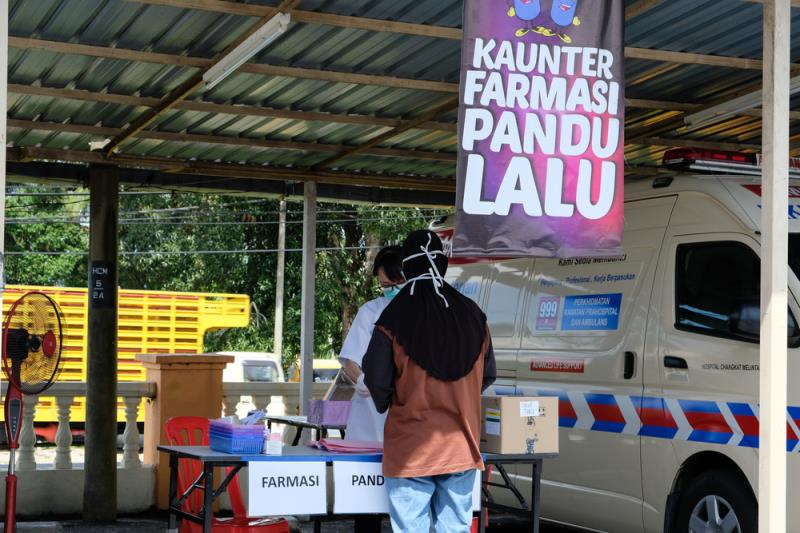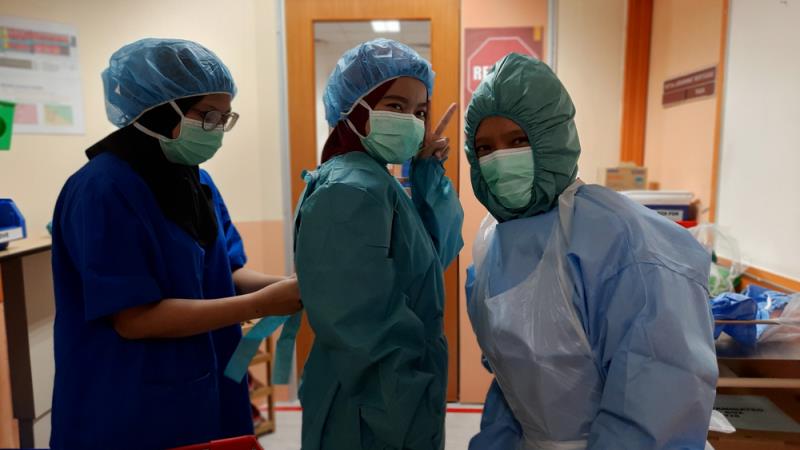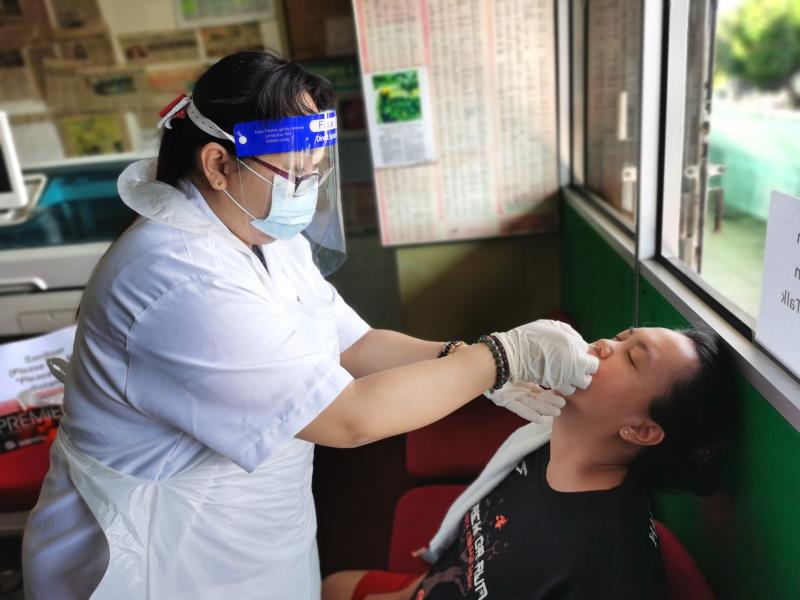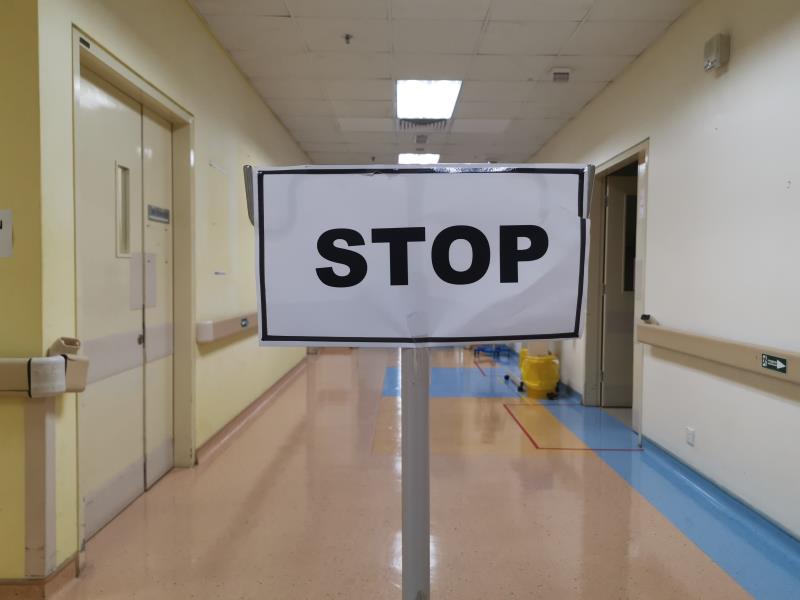Keeping cool heads: A clinical pharmacist on the COVID-19 management experience




 A pharmacist distributes medicines at a drive-through counter outside Hospital Changkat Melintang, Perak, to reduce entry into the building. (Photo credit: Nabilah Khalil/Shutterstock)
A pharmacist distributes medicines at a drive-through counter outside Hospital Changkat Melintang, Perak, to reduce entry into the building. (Photo credit: Nabilah Khalil/Shutterstock)When the COVID-19 pandemic emerged in Malaysia at the beginning of the year, MOH-designated hospitals throughout the country braced themselves to quarantine and treat patients with the novel disease. Among these was Hospital Sultanah Maliha in Kedah (formerly known as Hospital Langkawi), which received some of the earliest patients identified in the country. In August 2020, MIMS Pharmacist spoke to Teoh Cherh Yun, clinical pharmacist at the hospital, regarding his thoughts and experiences in the first 4 months of the pandemic.
What was the COVID-19 situation like in your hospital?
Our hospital received four cases of COVID-19 patients throughout the period [from February to June 2020]. Our first three patients were not severe in their clinical manifestations—they did not require any specific treatments as they were deemed to be in Clinical Stage 1 or 2, and their treatments were mostly symptomatic.
Eventually, they were discharged well—as you may have noticed, we even received media attention when our first case of COVID-19 in Langkawi, a 4-year-old girl from China, was discharged.
The true challenge emerged when the fourth case of COVID-19 was diagnosed in late March 2020. It was an imported case, which we believe was transmitted while he was travelling overseas. Diagnosed as a Clinical Stage 5 COVID-19 patient and subsequently intubated due to respiratory distress, his admission certainly raised even louder alarms among all the healthcare providers in our hospital.
How did you feel on learning your hospital would be a designated treatment centre for COVID-19?
If I am not mistaken, the news came to us when Chinese New Year was around the corner. I can’t deny that there were some slight feelings of worry inside me or I should say there were mixed feelings, as we were in the Chinese New Year celebration mood. The virus was known to be deadly. Serving in a COVID-19 treatment centre meant we were exposed to the risk of transmission.
Nevertheless, soon after that, I was able to calm myself and immediately picked up some readings on the dos and don’ts of infection control specific to COVID-19, as a means of preparation for myself.
 Healthcare workers donning PPE before attending to patients with COVID-19 in a Kuala Lumpur hospital. (Photo credit: Ham Hassan/Shutterstock)
Healthcare workers donning PPE before attending to patients with COVID-19 in a Kuala Lumpur hospital. (Photo credit: Ham Hassan/Shutterstock)What special measures were taken (infrastructure-wise, etc) to handle COVID-19?
From triage to inpatient treatment, we had designated areas to contain all suspected cases (ie, Patients Under Investigation, abbreviated as PUI) and confirmed cases of COVID-19, with designated pathways to transport these cases within the hospital compound.
In fact, during the later stages [of the pandemic], we set up a dedicated ward to treat all patients with Severe Acute Respiratory Infections (SARI), in which nasopharyngeal swab sampling to test for COVID-19 was mandatory.
COVID-19 management protocols from the Ministry of Health were fully adopted. Furthermore, the hospital management paid particular attention to the supply of Personal Protective Equipment (PPE) for healthcare personnel involved in COVID-19 management to ensure everyone concerned was well-protected.
We imposed strict controls at every entry point to minimize unnecessary entry to the hospital. Clinic sessions and non-emergency surgeries were rescheduled (we only entertained cases in which prescription renewal was required), community-based activities from the hospital were postponed—our full attention was given to protecting the hospital as well as our local community from further COVID-19 transmission.
Social distancing measures were practiced at all departments, including the pharmacy. We limited the number of visits from our patients for medication refills through extended supply and encouraged the use of Value-Added Services (VAS) for medication dispensing, such as the appointment system to control traffic within the pharmacy.
Notices on precautionary measures were placed everywhere in the hospital, with emphasis on infection control and prevention at all times. Hand sanitizers were made available at essential locations, including entry points, lift entrances, counters, and many others. Screening stations were also established at entry points to check if any personnel or visitors had fever or symptoms aligned with heightened risk of COVID-19 infection.
 A nurse administers a nasal swab test in Kota Kinabalu, Sabah. (Photo credit: Alen Thien/Shutterstock)
A nurse administers a nasal swab test in Kota Kinabalu, Sabah. (Photo credit: Alen Thien/Shutterstock)As a hospital pharmacist, what were your tasks in the COVID-19 care team?
Pharmacists are mainly involved in two aspects—clinical and technical management. I am more involved in the clinical management of COVID-19 patients. We ensure all agents relevant to COVID-19 pharmacotherapy are available and prepare the necessary documents to guide it well. Studying the current available evidence on COVID-19 treatment helped us to prepare for performing prescription screening, pharmacotherapy reviews on COVID-19 patients, or when receiving drug information enquiries from treating doctors.
We also work closely with our colleagues from the Logistics Pharmacy Unit to ensure the continuity of supply. At times, we helped to liaise with colleagues from other treatment centres to obtain necessary supplies based on individual situations.
What were some of the challenges faced in dealing with patients with COVID-19?
To the best of my limited experience in handling patients with COVID-19 in my hospital, the main challenge would always be the heightened anxiety and fear of transmission although we had done our best in terms of infection control and prevention. I believe this wasn’t that much different from other disease outbreaks, except COVID-19 had taken a significant limelight globally, and we had learned how it swept away lives in days across the globe.
Besides that, it was rather tricky for the team to differentiate if a change in clinical condition was purely due to disease progression, or due to adverse drug reactions causing similar signs and symptoms.
How did your family/friends feel about your work?
My mum has been fully supportive of my mission as a clinical pharmacist, even during the pandemic, but I can feel how worried she is. The same goes for my siblings. Most of my social activities were halted. I vividly recall that my travelling locations throughout the period were only between the hospital, eateries (to pack my lunch and dinner), my own rented room, and at a later stage, supermarkets to grab some essential items once in a while.
Yet just like many others who were in the same boat, my social interactions with friends and family members across the sea were not restricted virtually. I could still make daily calls to my mum reporting to her my daily encounters and get some updates on her on what was happening in Alor Setar. I also had multiple Zoom sessions and Whatsapp calls with friends on various occasions.
Of course, home-based exercise workouts were done via YouTube videos (haha!), and I also enjoyed the abundance of learning opportunities via local and international webinars and online courses. Leveraging on the advancement in technology greatly facilitated my life throughout the difficult situation.
 Restricted access to a ward under disinfection at Hospital Sungai Buloh, Selangor, a designated MOH hospital for COVID-19 treatment. (Photo credit: Yeexin Richelle/Shutterstock)
Restricted access to a ward under disinfection at Hospital Sungai Buloh, Selangor, a designated MOH hospital for COVID-19 treatment. (Photo credit: Yeexin Richelle/Shutterstock)The recommended pharmacotherapies for COVID-19 have been continuously evolving. Do you have an opinion on what has/hasn’t worked?
Frankly speaking, I feel I am not really in the position to tell if a treatment works well or not, mainly due to the limited number of cases I’ve encountered in my setting. However, I do believe that robust clinical trials on these pharmacotherapy regimens (including the much-anticipated SOLIDARITY trial) could certainly tell more.
In the case of our Clinical Stage 5 patient, the standardized recommendation stipulated in our MOH protocol—which included lopinavir and ritonavir, hydroxychloroquine, and [subcutaneous] interferon beta-1a, together with optimized ventilatory support, eventually went well with him.
The premorbid status of the patient should certainly be considered as a factor in determining the success of our treatment. Our patient was only known to have hypertension—he had no other comorbidities, including diabetes mellitus or ischaemic heart disease.
Has the emerging Sivagangga cluster affected you?
We are not currently affected by the cluster per se (touch wood); at least, no cases ‘imported’ into the island have been reported. The [Langkawi] ferry terminal has implemented strict regulations as best it can to prevent that, as well as to keep the newly emerged Tawar cluster at bay.
What words of advice would you like to give to others?
I deeply cherish the opportunity given to be involved in the management of COVID-19 patients in my hospital. As experiential learning serves the best in clinical settings, getting involved in managing COVID-19 patients would certainly facilitate our learning process, and thus enhance our competency and clinical skills.
Though there are fears inside us, we must not forget that pharmacists should not be seen as a party that is not brave to step up and work together with other members of the COVID-19 multidisciplinary team, especially in terms of bedside clinical management. In fact, this is when pharmacists are meant to be seen actively playing our roles as a reliable enabler and educator in pharmacotherapy and other relevant areas, such as PPE supply.
So stay brave and diligent while being mindful and cautious, are my words of advice to my colleagues in other places of practice.